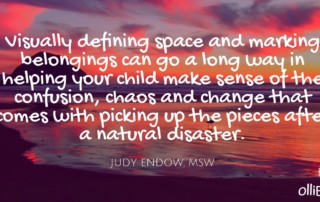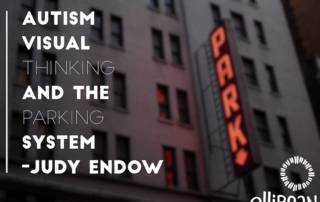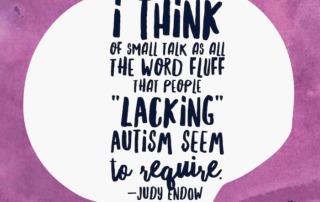Providing Sameness and Routine While Living in Unfamiliar Surroundings
Judy Endow's Strategies for Providing Sameness and Routine Many children with special needs thrive in an environment with a high degree of predictability, sameness and routine. In the aftermath of a natural disaster life is anything but what our kids need to succeed. Often entire families, neighborhoods or communities are in the flux of confusion, chaos and change and will be for quite some time to come. Putting sameness and routine back into your child’s life as quickly as possible will be helpful. How can you do that when you have no idea what life will hold for you and your
Quick Tips to Create a Visual Schedule
Judy Endow on the Importance of Continuing a Visual Schedule After a Natural Disaster Many children with special needs use a visual schedule to organize their day. A visual schedule shows which activities and the order in which the activities will happen. A visual schedule can map out a big chunk of time such as an entire morning, afternoon or even a whole day. A first/then visual schedule shows what will happen just now (first) and what will happen next (then). (Endow, 2011) If your child uses a visual schedule it is important that you continue using a visual schedule through the
Autism Visual Thinking and the Parking System
Autism and Visual Thinking Many autistic people think visually. As a young child who thought visually I was often thought to be stubborn and insisting upon my own way when in reality I was merely trying to keep ahold of a thought. Today in my work I come in contact with many on the spectrum and see the same phenomenon at work. Let me explain with two examples: Example Parking Objects: Every day Britt comes to school with a toy from home. It is very difficult for her to leave the toy in her cubby so she carries it
Autism and Holiday Schedules
Autism and Holiday Schedules by Judy Endow As an autistic getting through the holiday time can be quite tricky. As an autistic parent with children who had different needs it was even trickier. Routine and structure can go a long way! They anchor the days that can otherwise be perceived by an autism neurology as totally chaotic, which in turn, often leads to being overwhelmed and experiencing meltdowns. 1. Start by creating a visual schedule. You can simply use paper and pencil or use an iPad or computer to make your visual schedule. Words can
The BIG Deal About Small Talk!
by Judy Endow As an adult with autism small talk is the most difficult of all communication and yet it is likely the most important communication skill when it comes to developing real relationships with other human beings. I think of small talk as all the word fluff that people "lacking" autism (love to say it that way!) seem to require. I was reminded again last night when a dear friend popped out to chat online with me. Here is how our conversation started: Susie: hey Judy: what Susie: “what?” geez, was just saying hi Judy: STARTING OVER! Judy: hi
Visuals and Back to School Transitions
Our kids went back to school this month and likely many families are still struggling with the transition. It often seems that as the newness wears off, the getting-down-to-business-struggles begin. Autistic students have a particularly challenging time because their neurology does not permit them to automatically organize the world around them. Teachers and parents can support a child with autism to become more organized. For many it is an essential accommodation so they can be in a place to learn. Autistic students are often visual learners. This means that even though they may be verbal, as stress increases comprehension of
Creating Visuals Instantly for Unpredictable Activities
As an adult with autism, knowing what will happen during each day is important to me. For children, who have much less life experience, it is often a deal breaker in terms of them being able to participate in life around them. Using visual schedules supports this need both at school and on ordinary days at home, but what about those times when life gets hectic or when spontaneity is in order? Why Visuals Work Having an autism neurology means that neither internal regulation (physical, sensory, emotions) nor external regulation (making sense of the world around us) just happens! We






